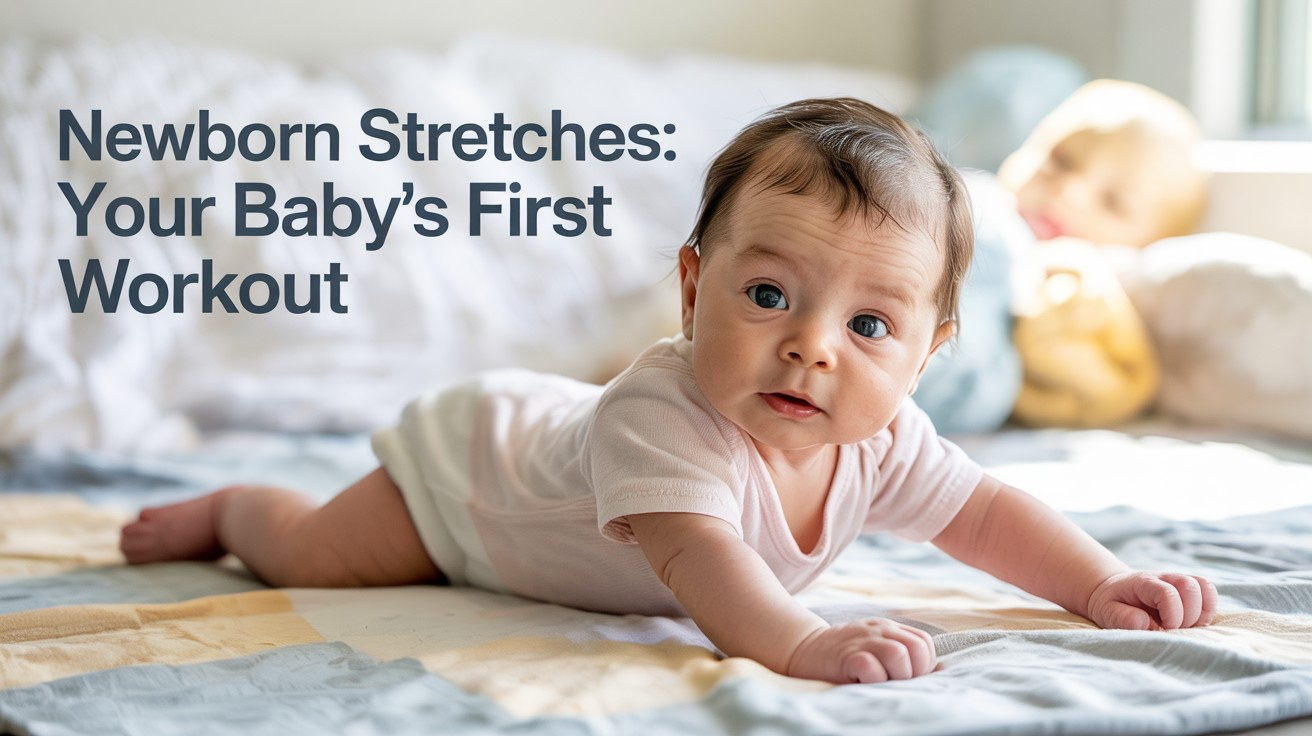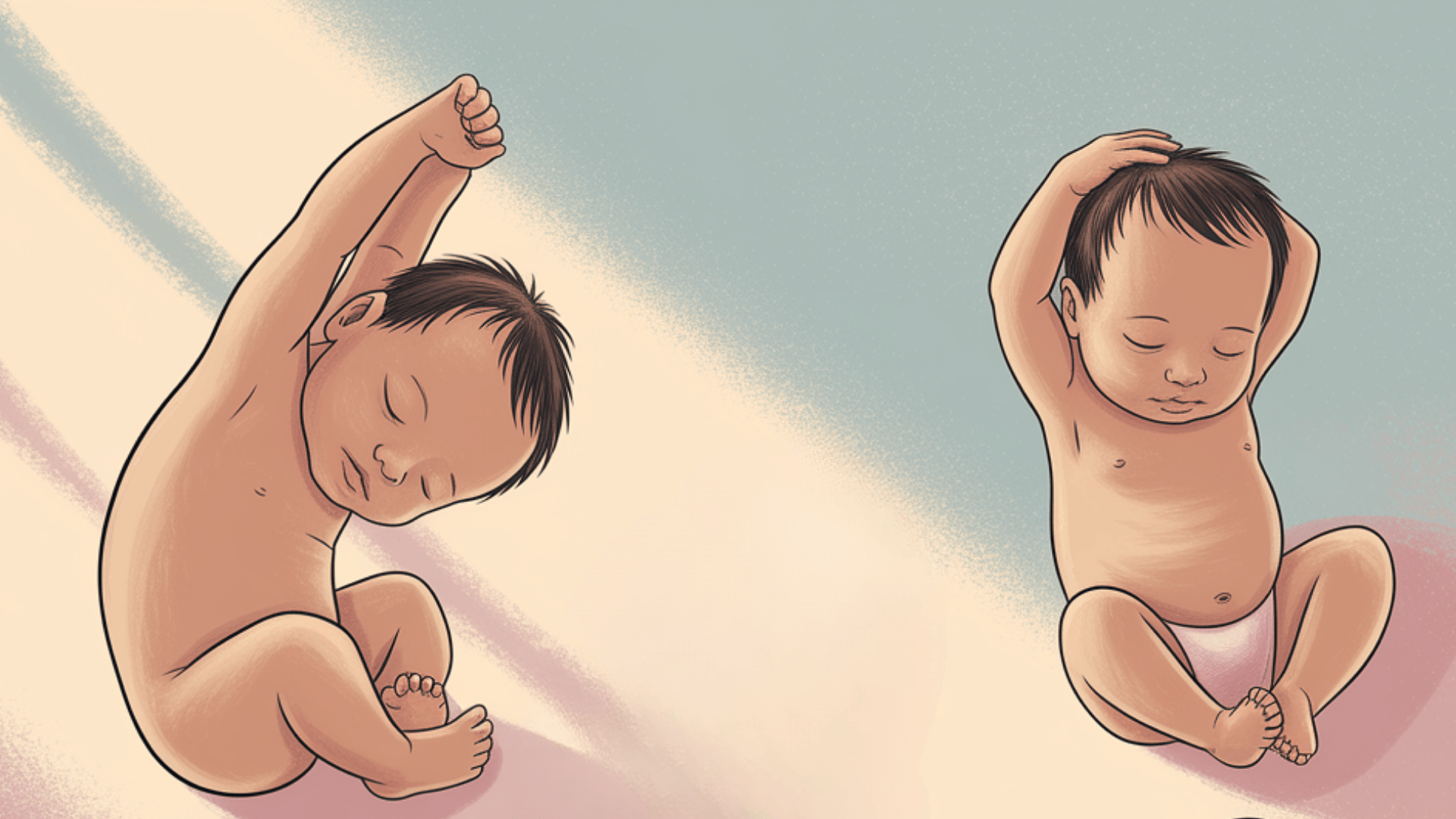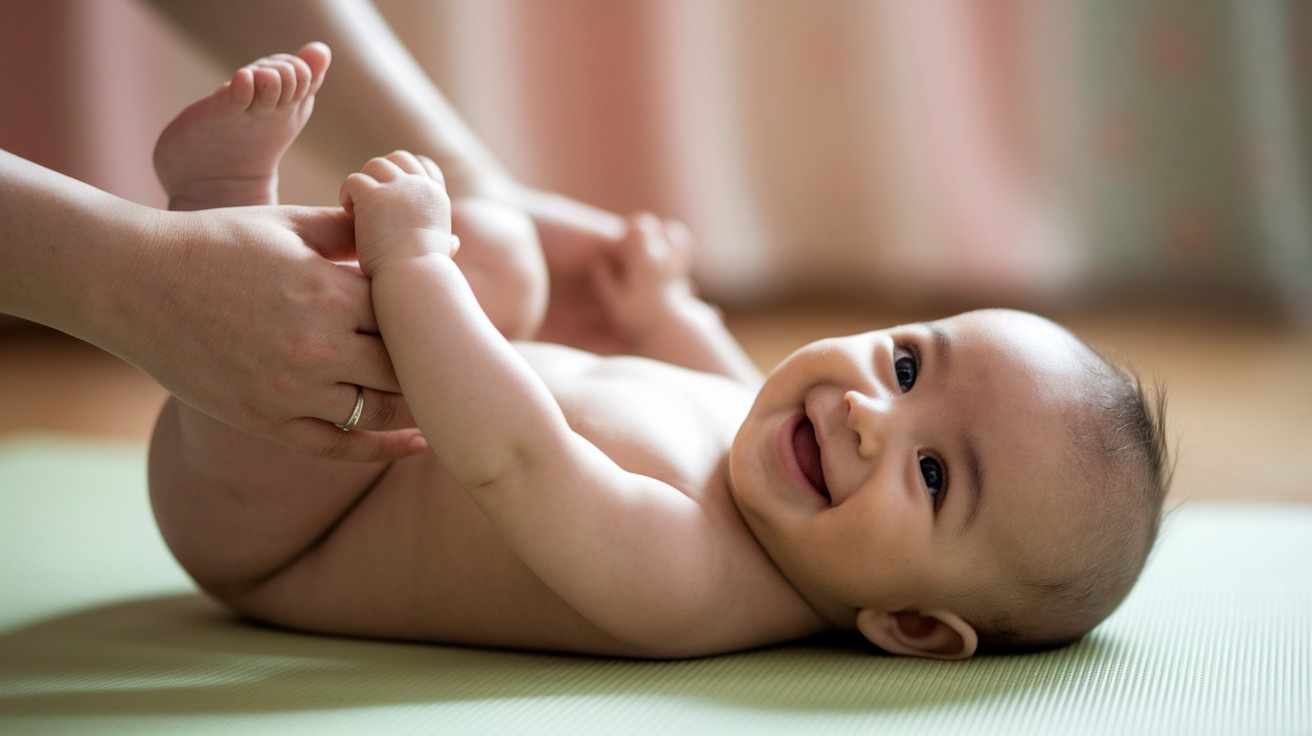
Those tiny arms reaching skyward and legs kicking freely aren’t just random movements—they’re your newborn’s first steps toward physical development. After months confined in the womb, your baby is finally experiencing the freedom to stretch and research.
These natural movements are more than just adorable photo opportunities; they’re crucial developmental milestones happening right before your eyes.
Each stretch strengthens muscles, improves flexibility, and builds neural connections at an astonishing rate.
Did you know your newborn’s brain forms approximately one million neural connections every second? These connections are reinforced through movement as your baby learns their own body.
Understanding these stretches can help you support your little one’s development travel while creating beautiful bonding moments that benefit both of you—physically and emotionally.
Understanding Newborn Stretches
Newborn stretches are natural movements that babies make as they adjust to life outside the womb. After spending months curled up in a tight space, your baby is now free to move around. These stretches aren’t just cute—they’re vital for your baby’s development.
Stretching is actually a reflex for newborns. Just like when they grasp your finger or turn toward your voice, stretching happens automatically. These reflexes are your baby’s way of testing out their new world.
Did you know? A newborn baby’s brain is developing at lightning speed—about one million neural connections every second! Movement and stretching help support this incredible growth.
The stretches your baby does help its muscles grow stronger and its joints become more flexible. This creates the foundation for all the physical skills they’ll develop in the coming months—from rolling over to crawling and eventually walking.
Common Newborn Stretches and Movements

1. The Startle (Moro) Reflex
Have you ever seen your baby suddenly throw their arms out wide and then pull them back in? This is called the Moro reflex, or startle reflex. It might happen when they hear a loud noise or feel like they’re falling.
This reflex usually disappears by around 3-4 months of age. Until then, swaddling can help keep your baby feeling secure and reduce those startles during sleep time.
2. Full Body Stretches During Sleep
Ever notice how your baby stretches from head to toe while sleeping? These full-body stretches help your baby’s muscles develop and can actually improve their sleep quality. It’s like their version of a morning stretch!
These natural movements strengthen tiny muscles and promote healthy nervous system development. Many pediatricians consider these stretches essential for motor skill advancement.
3. Arm and Leg Extensions
Your baby will often stretch out its arms and legs, sometimes holding them extended for several seconds. This helps the baby locate its limbs and build muscle strength. You might notice the baby doing this more often after being in a car seat or carrier.
These natural extensions develop your baby’s proprioception—their sense of where their body is in space—while simultaneously building core strength as they learn to control these movements.
4. Arching of the Back
Back arching is common and usually nothing to worry about. Your baby is working their back and neck muscles, which is important for when they start to lift their head during tummy time.
This natural stretching motion also helps develop the curve in your baby’s spine and strengthens the muscles needed for future developmental milestones like sitting up and crawling.
PRO TIP: Create a daily “stretch time” by placing your baby on a soft blanket for 10-15 minutes of unrestricted movement. This gives them freedom to stretch naturally without the constraints of clothes, diapers, or being held.
Benefits of Gentle Stretching for Newborns

Let’s take a quick break and imagine something…
Picture your baby as a tiny scout, finding their own body for the first time. Each stretch is like a new adventure, a way of saying, “Hey, these arms belong to me!” or “Look what I can do with my legs!” Isn’t that an amazing thought?
Now, back to those benefits…
Physical Development Support
Stretching helps your baby develop muscle tone and coordination. These early movements create pathways in the brain that will later control voluntary movements. Stretching also improves circulation, sending oxygen and nutrients to growing muscles and organs.
Promoting Body Awareness
When babies stretch, they learn where their body ends and the outside world begins. This is called proprioception—the awareness of the position and movement of the body. It’s their first step toward understanding their physical place in the world.
Potential Comfort for Colic and Gas
Certain gentle stretches can help relieve discomfort from gas or colic. Movements that gently compress or extend the abdomen can help move gas through your baby’s digestive system.
PRO TIP: If your baby seems uncomfortable with gas, try the “bicycle legs” stretch. Lay your baby on their back and gently move their legs in a cycling motion. This can help relieve gas and strengthen their tummy muscles at the same time!
Safe Stretching Techniques for Parents

Safety first! Babies are naturally flexible, but their joints, muscles, and bones are still developing. Always use these guidelines:
- Never force a stretch
- Watch your baby’s cues—stop if they seem uncomfortable
- Use gentle, slow movements
- Support your baby’s head and neck when needed
- Keep stretches brief—10-15 seconds is plenty
Incorporate stretches when your baby is in a good mood—after waking up or during playtime- but avoid post-feeding times to prevent spit-up.
Diaper changes offer perfect opportunities for quick stretches: gently bring knees to chest, extend legs one at a time, or move arms across the body. After bath time is especially effective for stretching routines since your baby’s muscles are warm and relaxed.
During these calm moments, try gentle arm extensions, leg stretches, and supported tummy-to-back rolls. These simple movements promote flexibility and body awareness while bonding with your baby during everyday activities.
Baby Yoga and Guided Movements

Wait, baby yoga? Yes, it’s a real thing! And it’s not about putting your newborn in downward dog.
Age-Appropriate Baby Yoga Poses:
Baby yoga involves gentle, supported movements that mimic natural stretches. Some simple positions include:
- Happy Baby – where you gently bring your baby’s feet toward their hands
- Butterfly – where you gently open and close your baby’s legs while they lie on their back
- Twist – a gentle spinal twist by bringing your baby’s legs to one side while keeping shoulders flat
Parent-baby bonding grows stronger through movement together. During stretching sessions, maintain eye contact while singing or talking to your baby, helping them connect physical activity with positive emotions and your comforting presence.
Consider establishing a consistent stretching routine as a calming ritual before naps or bedtime. Create a peaceful environment with dim lighting, gentle music, and comfortable temperature.
This consistent practice not only helps your baby relax but also builds anticipation for this special time together.
As your baby recognizes this routine, they’ll likely begin to associate these moments with security and connection, strengthening your bond even further.
Routine: Keep the environment peaceful—dim lights, soft music, and a comfortable temperature.
Signs Your Baby Enjoys Stretching

Your baby may raise its arms overhead while arching its back, accompanied by a content expression or happy cooing sounds.
It might also repeatedly extend and flex its legs with apparent satisfaction, especially during diaper changes or after waking up.
Positive Reactions to Look For
Are you wondering what positive reactions to look for during baby stretches? If your baby seems eager to continue or repeats the stretching motion voluntarily, these are good signs they’re enjoying the experience. Here are the positive reactions to look for:
- Smiling or cooing during stretches
- Relaxed facial expressions
- Reaching for their feet or legs (older babies)
- Calm, steady breathing
- Making eye contact while stretching
When to Stop or Modify a Stretch
Are you worried about when to stop or modify a stretch? Below are the signs that help you figure out when to stop or alter a stretch:
- Crying or fussing
- Turning away from you
- Stiffening their body
- Becoming red in the face
- Irregular breathing
PRO TIP: Take photos or videos of your baby’s natural stretching patterns. This helps you identify what movements come naturally to them, which you can then gently support during guided stretching time.
When to Consult a Healthcare Provider?
While stretching is normal for newborns, watch for concerning patterns that may require medical attention. Contact your doctor if you notice painful stretching, one-sided movements, rigidity, or tremors during stretches.
If your baby consistently cries during natural stretching, this could indicate joint discomfort that needs evaluation.
Some babies naturally have different flexibility levels—limited or excessive range of motion should be assessed by your healthcare provider to determine if physical therapy might help.
Remember that most stretching behaviors are perfectly healthy developmental movements that strengthen muscles and prepare your baby for future milestones.
Always trust your parental instincts and seek professional guidance whenever you’re unsure about your baby’s movements or comfort level.
Final Thoughts
Your newborn’s stretches represent the beautiful beginning of a lifetime of movement.
These seemingly simple motions—from the startle reflex to full-body extensions—are actually refined developmental tools that strengthen muscles, improve coordination, enhance body awareness, and even help relieve discomfort.
By gently supporting these natural movements during diaper changes, after bath time, or through baby yoga, you’re helping build the foundation for all future physical milestones.
Remember to follow your baby’s signals, keeping movements gentle and never forced.
Create regular stretching routines that foster bonding while respecting your little one’s comfort. While most stretching patterns are perfectly normal, trust your instincts if something seems concerning and consult your healthcare provider when needed.
Those tiny stretches today are preparing your baby for a lifetime of movement tomorrow!
If you’re interested in more informational content on mothers and babies, feel free to click here and research other blogs that you might enjoy.
